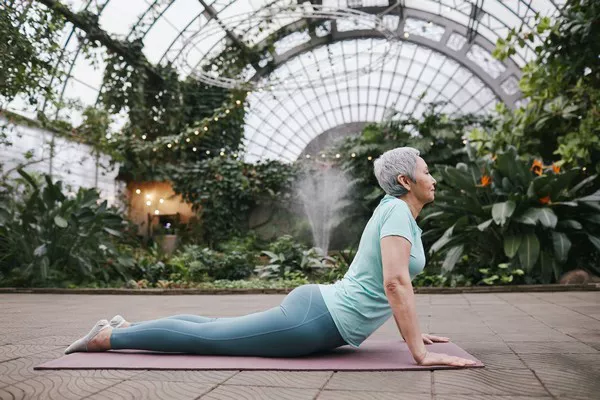Yoga is a popular form of exercise that has been practiced for thousands of years. It involves a series of poses, breathing exercises, and meditation techniques that help to promote physical, mental, and spiritual health. One of the most common experiences during a yoga practice is sweating. Some people sweat profusely during yoga while others barely break a sweat. If you are someone who sweats a lot during yoga, you may be wondering why this happens.
In this article, we will explore the reasons why you may sweat so much during your yoga practice.
1.The Heat
One of the most common reasons why people sweat so much during yoga is due to the heat. Many yoga studios are heated to around 90-100 degrees Fahrenheit, which can cause your body to sweat more than usual. This heat is designed to help loosen up your muscles and make it easier to move into different yoga poses. When your body gets warm, it tries to cool down by producing sweat, which then evaporates off your skin and cools you down.
2.Intensity Level
The intensity level of your yoga class can also play a role in how much you sweat. If you are practicing a vigorous form of yoga, such as Ashtanga or Power yoga, you may work up a sweat faster than if you were practicing a gentle form of yoga, like Hatha or Restorative yoga. These types of yoga involve slower movements and less intense poses, which may not cause you to sweat as much.
3.Your Individual Body Type
Another factor that can contribute to why you sweat so much in yoga is your individual body type. Some people naturally sweat more than others, regardless of the activity they are doing. This is largely determined by genetics and can vary from person to person. People with more active sweat glands tend to produce more sweat than those with fewer sweat glands.
4.Clothing Choices
The clothing you wear during your yoga practice can also play a role in how much you sweat. If you are wearing tight-fitting, synthetic fabrics that do not allow your skin to breathe, you may sweat more than if you were wearing loose-fitting, breathable cotton clothing. It is important to choose clothing that is comfortable and allows you to move freely without restricting your movements.
5.Hydration Levels
Your hydration levels can also contribute to how much you sweat during your yoga practice. If you are dehydrated, your body will produce less sweat because it is trying to conserve water. On the other hand, if you are well-hydrated, your body will produce more sweat because it has more fluid to spare. It is important to drink plenty of water before, during, and after your yoga practice to stay hydrated.
6.Detoxification
Yoga is known for its detoxifying effects on the body. When you sweat during yoga, you are releasing toxins from your body through your skin. These toxins can include pollutants, heavy metals, and chemicals that have built up in your body over time. This process of sweating and detoxifying can make you feel rejuvenated and refreshed after your yoga practice.
7.Emotional Release
Finally, sweating during yoga can also be a sign of emotional release. Yoga is a holistic practice that involves not just physical movements but also mental and emotional components. During yoga, you may experience feelings of stress, anxiety, or tension being released from your body. This can manifest as sweating, as your body tries to release these emotions through your skin.
In conclusion
Sweating during yoga is a common experience that can be influenced by a variety of factors. The heat, intensity level, individual body type, clothing choices, hydration levels, detoxification, and emotional release can all contribute to why you may sweat so much during your yoga practice. Regardless of why you sweat, it is important to stay hydrated and wear comfortable clothing that allows you to move freely during your practice. Embrace the sweat and enjoy the many benefits of this ancient practice!
Related topics:


